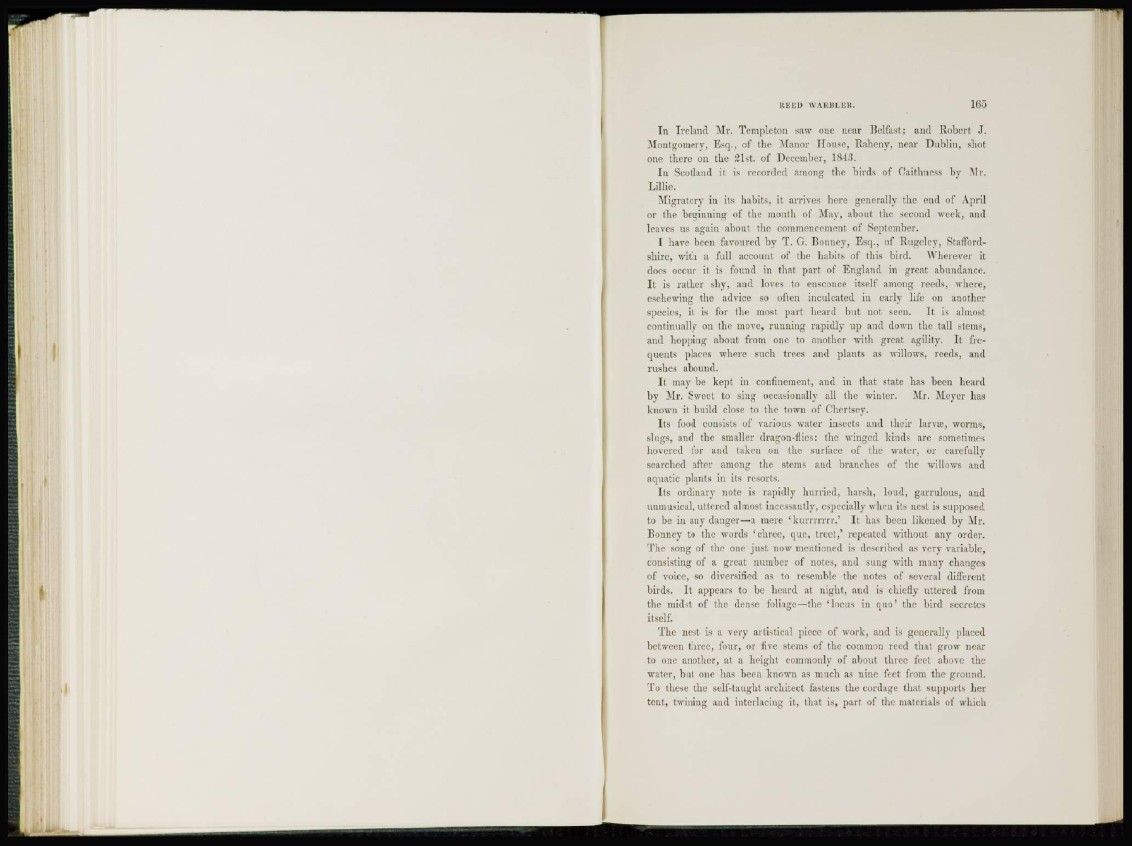
I n Ireland Mr. Templeton saw one near Belfast; and Robert J.
Montgomery, Esq., of the Manor House, Raheny, near Dublin, shot
one there on the 21st. of December, 1843.
I n Scotland it is recorded among the birds of Caithness by Mr.
Lillie.
Migratory in its habits, it arrives here generally the end of April
or the beginning of the month of May, about the second week, and
leaves us again about the commencement of September.
I have been favoured by T. G. Bonucy, Esq., of Rugeley, Staffordshire,
with a full account, of the habits of this bird. Wherever it
does occur it is found in that part of England in great abundance.
I t is rather shy, and loves to ensconce itself among reeds, where,
eschewing the advice so often inculcated in early life on another
species, it is for the most part heard but not seen. It is almost
continually on the move, running rapidly up and down the tall stems,
and hopping about from one to another with great agility. It frequents
places where such trees and plants as willows, reeds, and
rushes abound.
I t may be kept in confinement, and in that state has been heard
by Mr, Sweet to sing occasionally all the winter. Mr. Meyer has
known it build close to the town of Chertsey.
Its food consists of various water insects and their larva?, worms,
slugs, and the smaller dragon-flies: the winged kinds are sometimes
hovered for and taken on the surface of the water, or carefully
searched after among the stems and branches of the willows and
aquatic plants in its resorts.
Its ordinary note is rapidly hurried, harsh, loud, garrulous, and
unmusical, uttered almost incessantly, especially when its nest is supposed
to bo in any danger—a mere ' k u r r r r r r r . ' It has been likened by Mr.
Bonney to the words 'chree, que, treet,' repeated without any order.
The song of the one just now mentioned is described as very variable,
consisting of a great number of notes, and sung with many changes
of voice, so diversified as to resemble the notes of several different
birds. It appears to be heard at night, and is chiefly uttered from
the midst of the dense foliage—the 'locus in quo' the bird secretes
itself.
The nest is a very artistical piece of wTork, and is generally placed
between three, four, or five stems of the common reed that grow near
to one another, at a height commonly of about three feet above the
water, but one has been known as much as nine feet from the ground.
To these the self-taught architect fastens the cordage that supports her
tent, twining and interlacing it, that is, part of the materials of which